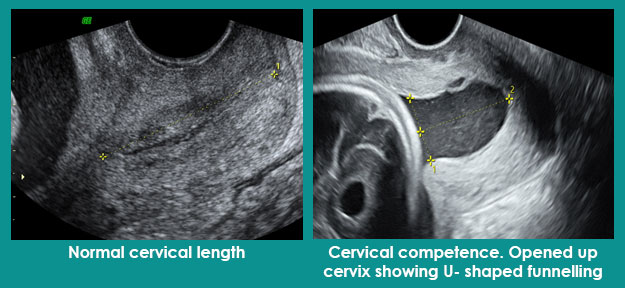The cervix is the lower part of the uterus (mouth of the uterus). It is this that shortens and opens up allowing the passage of baby during the childbirth. We want it to remain long and closed throughout the pregnancy and open up only at the time of childbirth.
Measuring the length of the cervix is called as cervical length screening.
The purpose is to determine whether the cervix is short or long and whether it has started opening (called as funnelling) up or not. Any cervical length which is < 25 mm is labelled as short cervix.
Pregnancies with short cervices are at increased risk of second trimester miscarriage or delivery before 34 weeks.
It is always done vaginally. We can do it from abdomen as well, however, that assessment for length is spurious.
There is no specific time period. We do cervical length measurement transvaginally at the time of first trimester screening as it provides us a baseline. Then depending on women’s previous history of preterm delivery or second trimester miscarriage or clinical complaints like pain or heaviness in the lower abdomen, bleeding or leakage of fluid per vaginum, we do an internal scan for cervical length assessment.
We follow the protocol as laid down by Fetal Medicine Foundation (FMF), UK.
This is the most common question we are asked. Transvaginal ultrasound is absolutely safe. It will not harm the baby or induce miscarriage or bleeding. At the most, you might feel a slight discomfort while undergoing transvaginal scan but then this also depends on your pain threshold.
